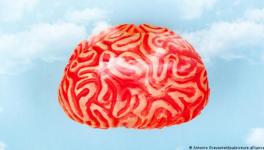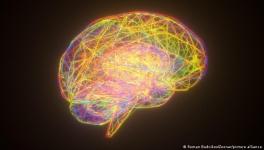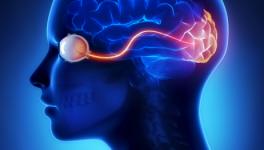How Does the Brain Control Animal Behaviour?
Image for representational use only.Image Courtesy : inverse.com.
Behaviour of any kind is a direct response to information that the brain receives from the environment. All the information that the body receives is sent to the brain and the result can be anything like seeing, hearing, smelling and for that matter anything perceivable. But information of any sort that parts of the body send to the brain is essentially the chemical and electrical signals. How a particular behaviour in response to a signal received by the brain depends upon how the brain decodes the signal. The electrical or chemical signals are called the spike trains and every spike train is similar in characteristics. Deciphering how the brain decodes a spike train in giving rise to a particular behaviour has been a fundamental question in neuroscience.
It has been difficult to link animal behaviour to its underlying neural spike trains due to the intricate complexities of neural circuits and animal behaviour. Scientists from Aalto University, Finland, studying mice behaviour in near complete darkness are able to shed new lights on what neural signals mean to the brain with unprecedented resolution. Their study was published in the journal Neuron, a Cell publication.
The nervous system often carries similar messages in many different ways, that is what makes deciphering the rulebook for how the brain decodes information in spike trains an extremely difficult task. When different versions of similar messages reach the brain, it interprets all of these signals together and then decide what the outcome that is the behaviour would be.
In their experiment, Professor Petri Ala-Laurila and his team at the Aalto University and the University of Helsinki trained the mice to swim towards an extremely faint light in a pitch-dark maze and they measured how effective the mice were at finding it. They chose darkness as it reduces the number of relevant spike trains to the two most sensitive channels to dim light—one called the ON channel and other called the OFF channel. They created a scenario where there are a limited number of spike trains sent for a specific input and by doing so, they were able to isolate which individual spike train controlled behaviour.
To overcome the difficulty of carrying out precise science experiments in complete darkness, the team developed a unique way. They had to measure electrical signals originating from single photons passed through the retina, the neural tissue of the eye, and then to link these signals to mouse behaviour in the maze. The team tracked mice in the dark using night vision cameras and deep-learning based software so accurately that they could predict where photons land on each mouse’s retinas.
The light that the mice were trying to find was made dimmer each time, to make sure that in the last few attempts only a few photons at a time were entering a mouse’s eyes.
In their experiment, the team used two types of mice. The first kind is the ordinary laboratory mice. The second group was genetically modified so that their sensitive ON channel needs 10 times more light to send a spike train than the most sensitive OFF channel. The genetically modified mice were 10 times worse at seeing the light than the unmodified ones. This made the researchers able to prove their important discovery, that is, individual spike trains through the ON channel are responsible for making the mice see the light.
“This is like trying to translate a language. Previously we were using a phrasebook: we knew what whole sentences meant but not the meaning of individual words. Now that we can link precise codes consisting of individual nerve impulses to behaviour, we are getting closer to understanding individual 'words',” said Professor Petri Ala-Laurila, the lead author of the study.
For 70 years, researchers involved in the field of neuroscience have been using the information theory to find out how the brain handles different signals. In this framework, one of the assumptions has been that when the brain has to decide between two competing signals, it relies on the signal that contains more information. Professor Petri Ala-Laurila and his team’s research has turned this upside down. In the case of ON and OFF channels in vision, the ON channel, apparently the signal with less information was the key in controlling behaviour. "This discovery is really exciting for all of neuroscience because it is an experimental proof of the brain prioritizing information encoded in spikes rather than in the absence of spikes," said Lina Smeds, the first author of the study.
Get the latest reports & analysis with people's perspective on Protests, movements & deep analytical videos, discussions of the current affairs in your Telegram app. Subscribe to NewsClick's Telegram channel & get Real-Time updates on stories, as they get published on our website.


















